How to Prepare Your Vegetable Garden for Winter (My Fall Prep Checklist)
Learn how to prepare your vegetable garden for winter with simple fall tasks that protect your soil, reduce spring chaos, and set up next year’s garden.
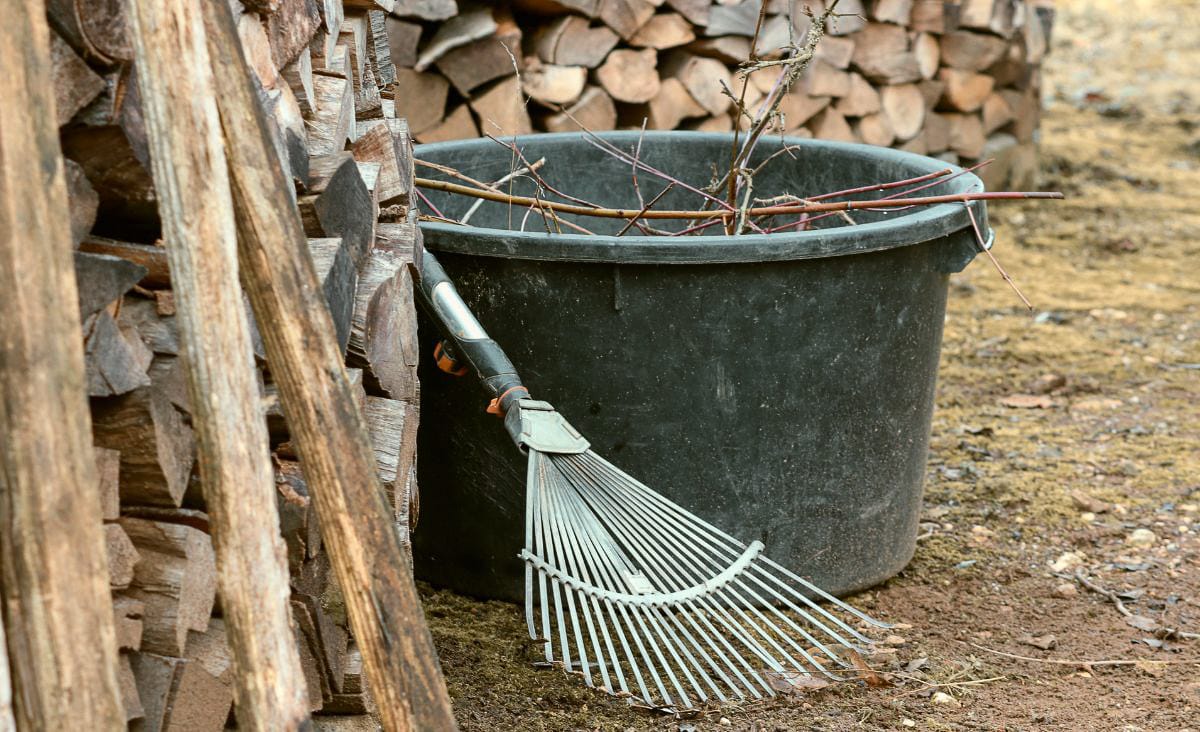
By the time the leaves start to fall here in Maine, I’m usually torn between wanting one more warm afternoon in the garden and wanting to throw a tarp over everything and call it good. But every time I’ve given in to that temptation, I regretted it in April. Winter hits hard here, and spring doesn’t exactly ease in gently. The more fall work I do, the easier spring is to handle.
I’ll admit, some years I’ve waited too long, tested frozen soil with a shovel, and told myself I was never doing that again. But when I take the time to prep things properly, everything just goes smoother once things warm up. Beds thaw evenly. Soil isn’t compacted. Fewer pests overwinter where I don’t want them. And best of all, I’m not scrambling to play catch-up the second the garden itch returns.
If you want a smoother spring, here’s what I make sure to get done now.
Why I Put More Effort Into Fall Than Spring
I used to think spring was the most important time to focus on the garden. Now I know it’s fall. Once winter hits, whatever you left out there is basically frozen in place until spring. Taking care of these jobs now means your soil has all winter to rest, repair, and rebuild.
Here’s what I finally figured out… winter prep isn’t just protection. It sets up next year’s garden. When I do this work in fall, spring starts off with healthier soil, fewer pests, and beds you can plant as soon as the weather allows.
How I Prep My Vegetable Garden for Winter (Step-by-Step)
These don’t take long, but they really do add up.
Clear Out Spent Plants (But Know What to Keep)
Most vegetables can come out once they’re done for the season. Leaving dead or dying plants in place gives pests and diseases a place to ride out the winter.
That said, don’t rip out everything. Plants like beans, peas, and tomatoes can be cut at soil level instead of pulled. Their roots add organic matter as they break down, so no need to yank them out. If you struggled with disease this season, err on the side of caution and remove the entire plant (and we’ll talk about what to do with that debris in the next section).
Deal With Diseased Plants the Right Way
This is one thing I’m stubborn about. Anything that struggled with blight, powdery mildew, squash vine borers, or just looked questionable gets pulled and tossed. I either burn it in the burn barrel or dispose of it with household trash.
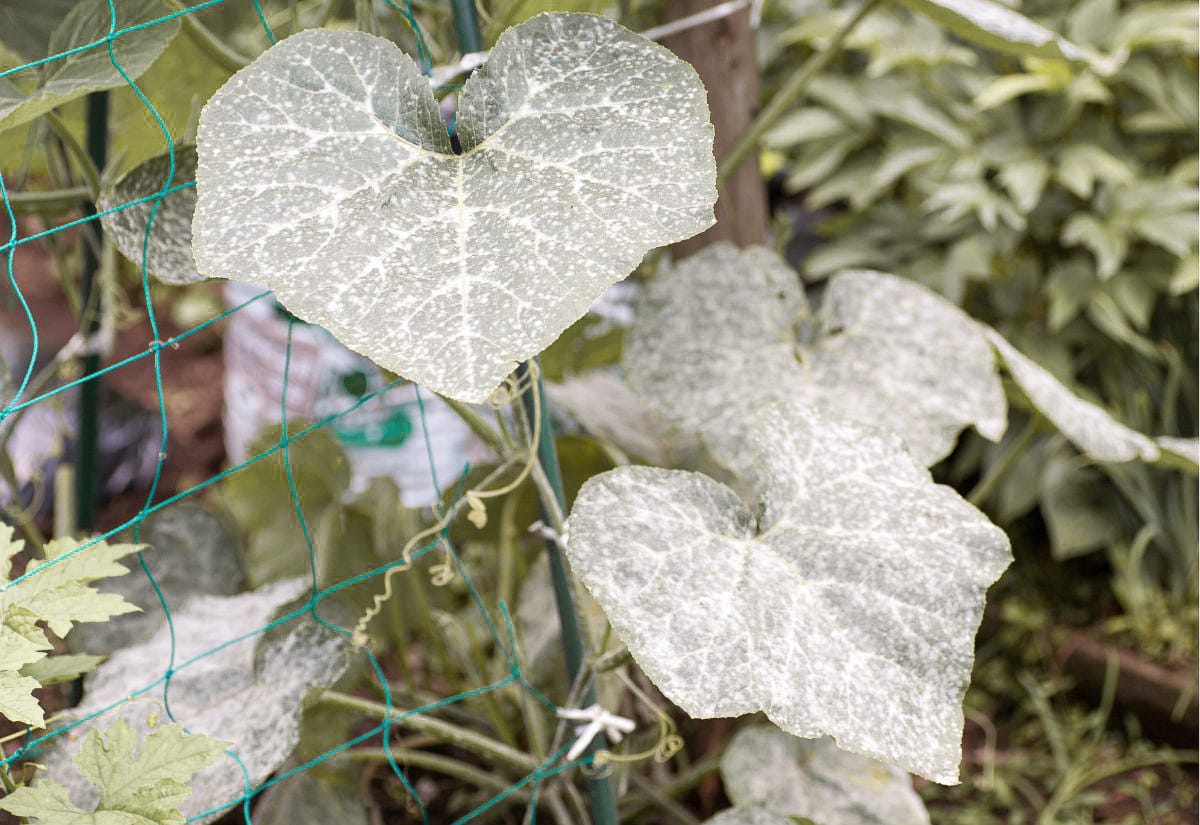
Do not compost diseased foliage unless you’re absolutely certain your pile gets hot enough to kill pathogens. Most backyard piles simply don’t.
Add Compost and Soil Amendments Before the Ground Freezes
I always aim to get my compost down before Thanksgiving. Adding it now gives it all winter to settle in and start breaking down. A quick soil test in the fall tells you what you’re working with. Some nutrients, like phosphorus and lime, take months to incorporate well, so fall is the best time to do it. If you skip the fall test, add compost now and run the test in spring to see if you need to fine-tune.
If you keep animals, this is also a great time to add “hot” manures like chicken manure so they mellow out over winter.
Mulch Garden Beds So the Soil Stays Protected
Bare soil going into winter never ends well. Wind erodes it, rain compacts it, and freeze–thaw cycles wreak havoc on delicate soil structure.
You can mulch garden beds with:
- Leaf mold (my personal favorite)
- Shredded leaves
- Straw (my second favorite)
- Pine needles
- Compost topped with a lighter mulch
Leaf mold saves me more time in spring than anything else. It insulates the beds well and breaks down into really nice, rich soil. If you haven’t tried making leaf mold yet, give it a try. It’s one of the easiest things you can do for your soil.
Turn Your Compost (Or Let Your Chickens Do It)
If your chickens can get to your compost pile, you can probably skip this step. Mine handle it without any effort on my part. If not, give yours a good stir before everything freezes solid. You’ll notice a huge difference if you give it one good turn now.
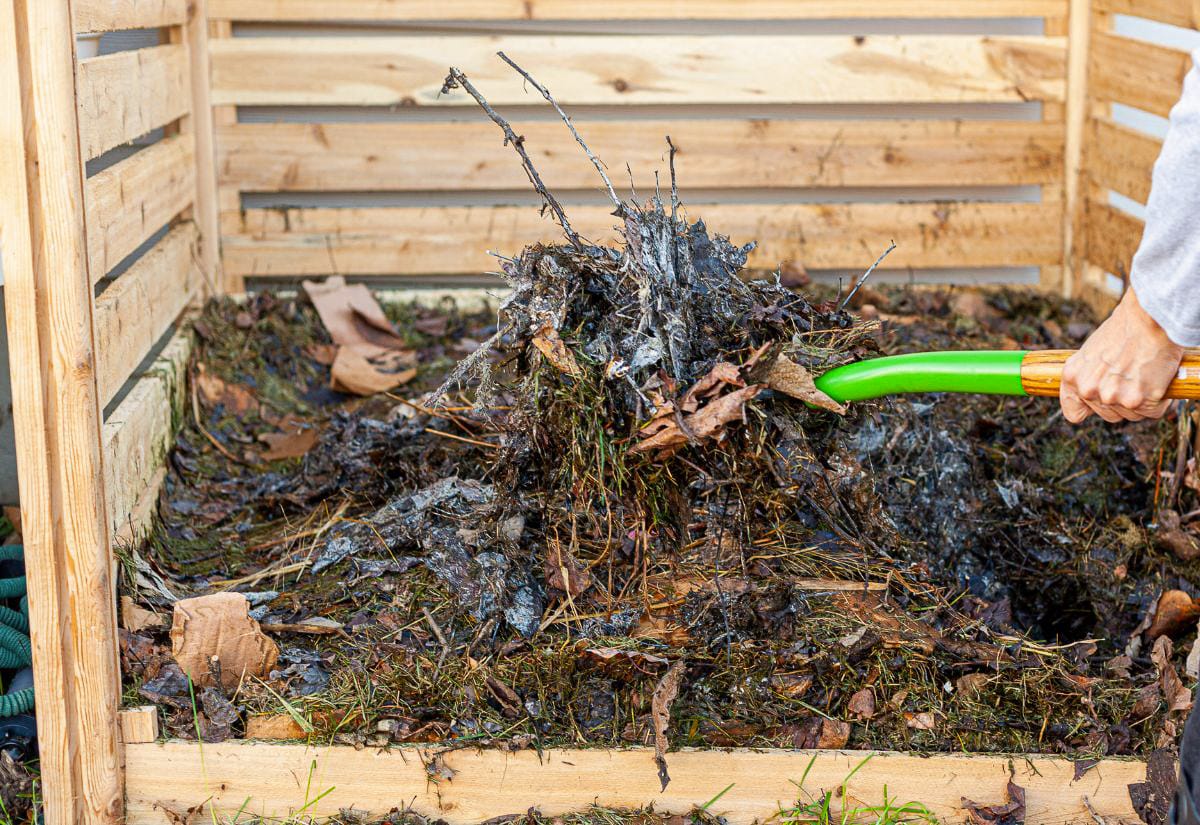
Fix Any Structural Issues While the Weather Is Mild
If critters gave you a hard time this year, or you already know that fence needs attention, now’s the time. I’ve patched plenty of fencing in April while also trying to get the garden started, and I don’t recommend it. Late fall is a much easier time to handle things like:
- Repairing trellises
- Shoring up raised beds
- Tightening chicken wire
- Replacing rotted boards
- Building new cold frames or low tunnels
Spring will already have you running in ten directions. Anything you cross off now frees up time later.
Mark Fall-Planted Crops Before the Snow Comes
Every time I don’t mark where I planted garlic, spring rolls around and I’m basically guessing what’s where. A simple label stake, string line, or garden map can save you from accidentally digging up your own hard work. This goes for any overwintered crops—garlic, perennial onions, or fall-planted bulbs.
Now’s the time to get your garlic in the ground. This post walks you through how to plant it in fall so you’ll pull bigger bulbs next summer.
Save Seeds From This Year’s Best Performers
If you grow heirlooms, fall is when you want to get your seed saving done. Dry your seeds thoroughly, label them well, and tuck them somewhere cool and dry. I keep mine in a binder so I’m not hunting around for packets in March. If you’re new to saving seeds or want a deeper dive, my Seed Saving Encyclopedia breaks everything down in one place.
Which Vegetables You Can Overwinter in the Garden
This depends heavily on your zone, but a lot of veggies actually overwinter just fine with a little protection.
Root crops that do well with mulch alone:
Carrots
Beets
Turnips
Garlic
Onions
Potatoes
Leeks
A thick blanket of leaf mold or straw is enough for most zones. In colder climates (like here in Maine), I pile it deeper. Six to eight inches is usually plenty.
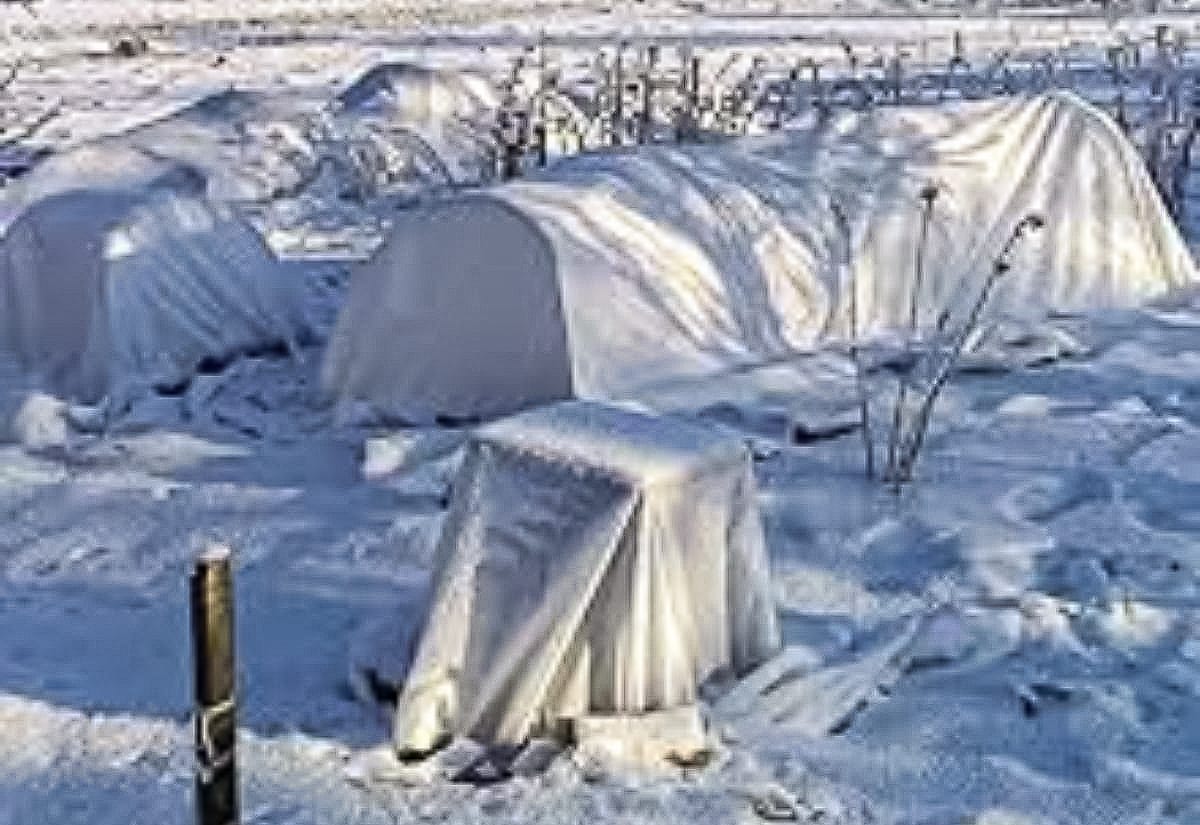
Vegetables that need a polytunnel or garden fleece:
Cabbage
Kale
Broccoli
Spinach
These keep growing slowly throughout winter or hold beautifully until spring if they’re insulated properly. A simple polytunnel setup can make a huge difference, and lightweight garden fleece works well when you just need a little extra protection.
If you’ve never overwintered veggies before, start small. It’s honestly kind of fun digging up a carrot in January and it usually tastes sweeter than anything you pull in summer.
What This Sets You Up For in Spring
After all this, spring feels a lot easier to manage. Most years, I’m able to get into the garden in early April. But only if I’ve kept off the beds when they’re soggy and waited for warmer days so overwintering insects can wake up before I start disturbing things.
Once fall work is handled, spring is mostly tidying up and getting excited to plant again.
Your Winter Garden Prep Questions, Answered
These are the questions people ask me most often.
Pin this guide and keep it handy for fall garden prep.
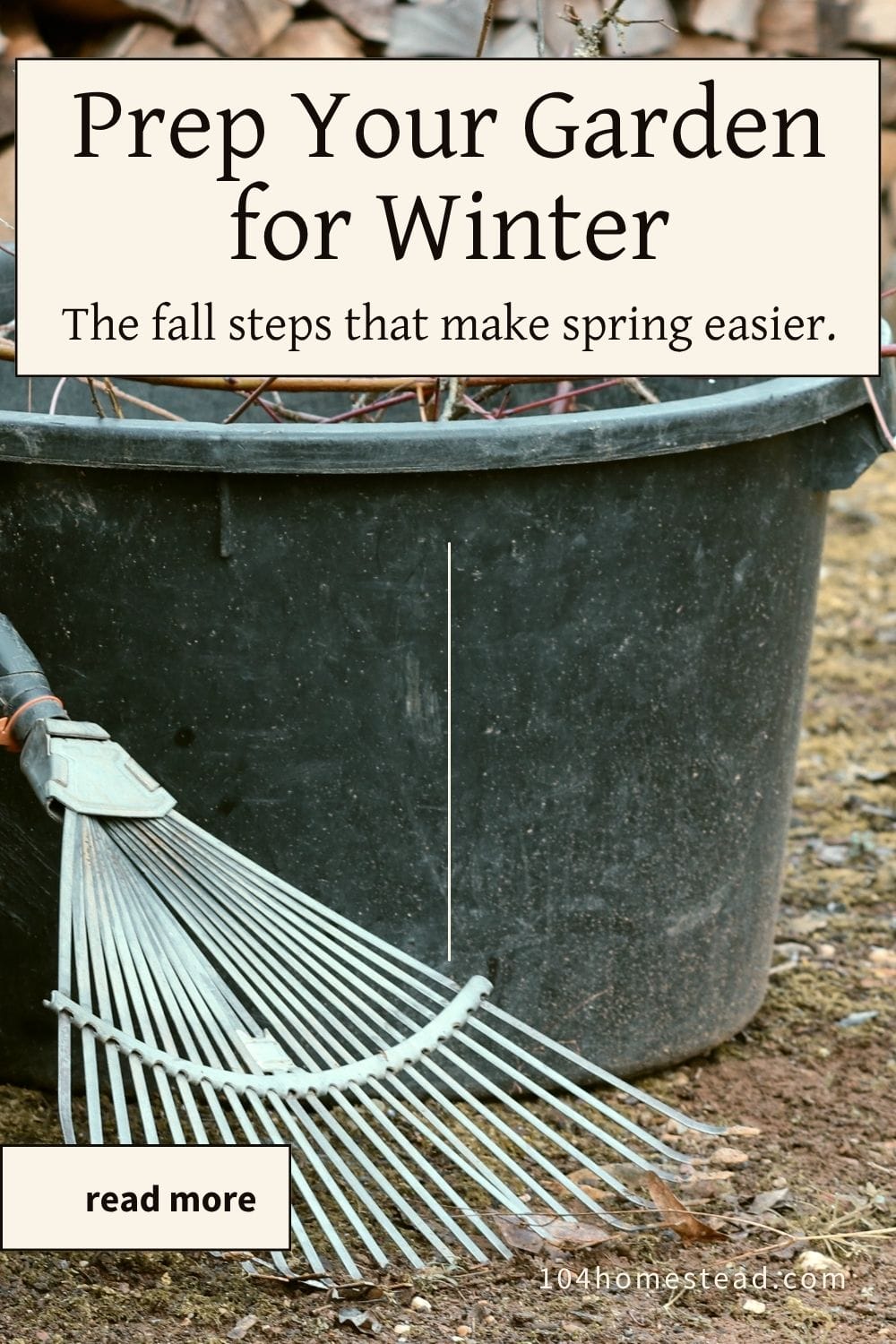
I know winter garden prep isn’t exactly the fun part, but it pays off in a big way. Once the snow melts and the garden itch kicks in, you’ll be glad you took the time to get the beds cleared, mulched everything, and protected it. It’s the only way I keep spring from turning into a mess.
As you wrap up your garden chores, it’s a good time to look at the bigger picture too. Getting the beds tucked in is just one piece of getting ready for the cold months. If you want to winterize the rest of your place too, my guide on preparing the homestead for winter walks you through the whole-home approach. And if you keep animals, my simple winter livestock routine shows exactly how I get everyone ready for the long Maine months.
If you’ve got your own fall garden rituals or tricks that make spring easier, I’d love to hear them. Drop a comment or share your experience so we can all head into next season with a little more confidence.

All great tips. A lot of people just assume that you pull out the old plants and you are done. But now is a great time to get that soil ready for next season. It’s the perfect time to add in any fresh manure. It will break down slowly over time and really rejuvenate the nutrients.
I know here in Maine you go from waiting (not so patiently) for thaw to a mad dash because the growing season is so short. Anything that can be done ahead of time certainly reduces the stress of a spring dash.